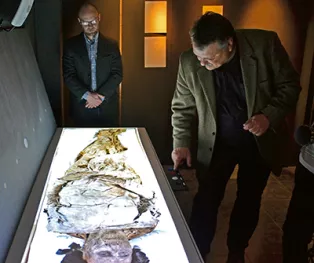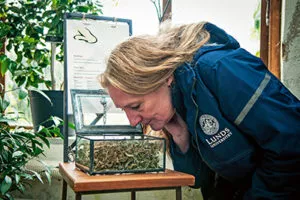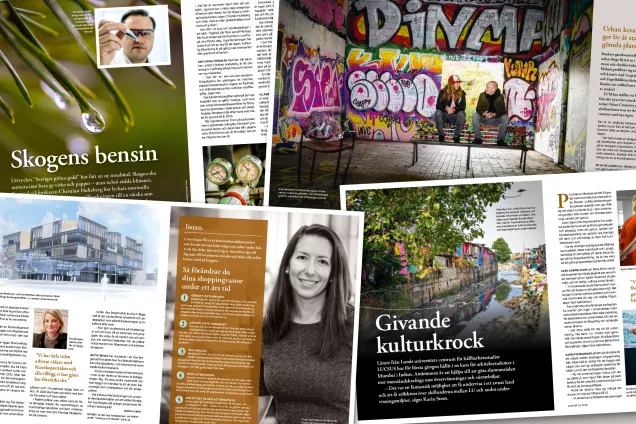To make a long story short, Peder Winstrup was bishop of Lund, first during the Danish era, but also after the end of the war between Sweden and Denmark in 1658, as he succeeded in keeping his position when Skåne became Swedish. This skilful politician also convinced King Karl X Gustav of the idea of establishing a university in Lund.
Peder Winstrup died in December 1679 and, after his burial in the cathedral in Lund a month later, he fell into oblivion. In 2012, a decision was taken to move his coffin once more and to bury his remains in the North cemetery in Lund.
“I thought this was a sensational decision, but as I sat and read through the county council’s decision, Andreas Manhag came rushing in with glass slides from a previously unknown opening of Winstrup’s coffin from 1923. We were astonished to see how well-preserved the body in the coffin appeared to be”, says Per Karsten, head of the Historical Museum.
The coffin was opened again in November 2013. This marked the beginning of a major project which has given (and continues to give) a unique insight into health and living conditions in the 1600s, through an interdisciplinary study of the body, clothing and other contents in the coffin.
“Winstrup’s mummy is among the world’s five best preserved bodies from the 1600s. He is our Ötzi ice man”, says Per Karsten.
A current exhibition at the Historical Museum presents Winstrup’s history and the scientific findings relating to him. At the same time, a popular history book “Peder Winstrup – historier kring en 1600-talsmumie” (“Peder Winstrup – tales of a 17th century mummy”), written by Per Karsten and curator Andreas Manhag, has been published.
The exhibition shows various results from all the investigations that have been carried out, and also displays other findings from Winstrup’s life. In addition, visitors can view a 3D reconstruction showing what Krafts torg and the Cathedral looked like in Winstrup’s time.
“It looked very different, it was really labyrinthine. Now, we are able to see what it was like in the 1600s in a very realistic way. For the most part, this is an exact reconstruction”, says Andreas Manhag.
A parallel exhibition in the Botanical Garden presents the plants that were found in Winstrup’s coffin. Archeobotanist Per Lagerås found around 40 different plant species in the coffin. Bente Eriksen, director of the Botanical Garden, then went out into the garden and in nature to gather and dry the same plants as they are today. The plants can be divided into four different groups: aromatic and medicinal plants, edible nutritious plants, weeds, and a few odd species such as linden and boxwood leaves.
“Boxwood was completely new to Sweden at that time, so it could be a sign that it was considered elegant and modern to have boxwood”, says Bente Eriksen.
The exhibition also includes a book and an app enabling visitors to enjoy a guided tour of the garden through their mobile phones, to learn more about the plants of the 1600s and the species included in the coffin. There is also a fragrance box where visitors can experience the scent of the dried plants.
Among the other plants were hop, which was used to sleep well, various aromatic plants that may also have contributed to the preservation of the body, and plants which were associated with death and ghosts at the time.
“This is the case for flax and juniper. Juniper twigs were often strewn after the funeral procession because the dead would not return over the sharp twigs while witches couldn’t pass a place without counting everything first. That is where both the twigs and the tiny flaxseeds come in”, explains Bente Eriksen.
The exhibition in the Botanical Garden is on until Kulturnatten (Culture Night) in Lund on 17 September, whereas the exhibition at the Historical Museum will continue until 28 January next year.
Text and photo: Jonas Andersson




